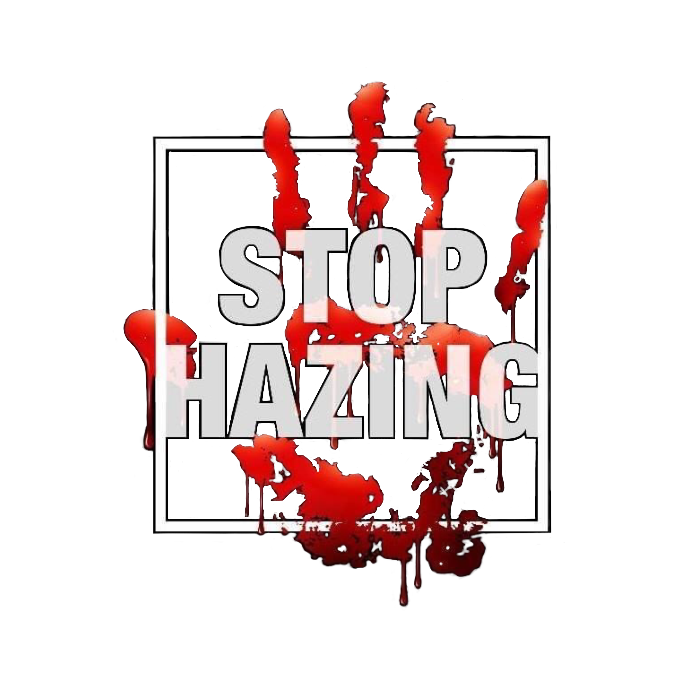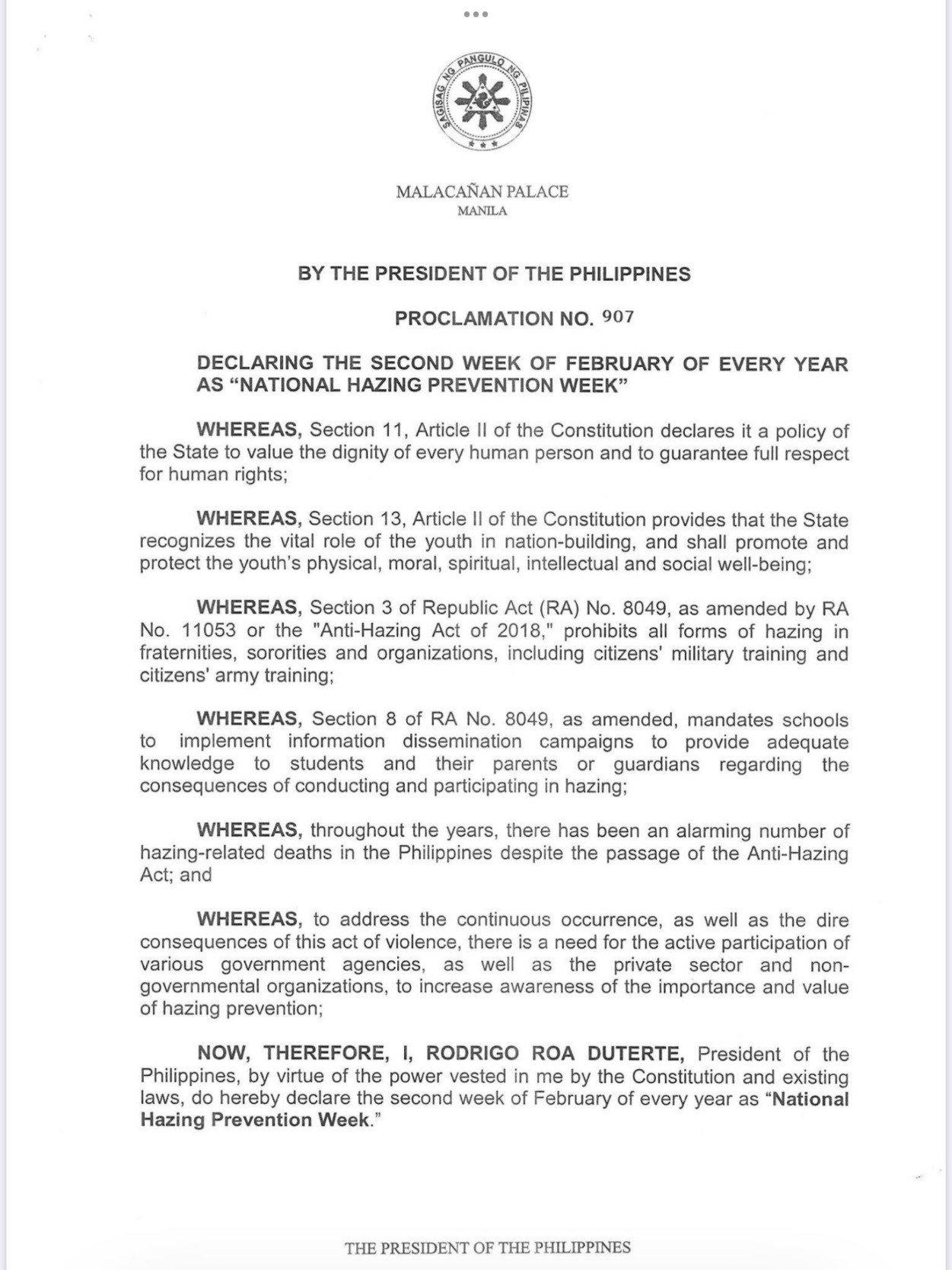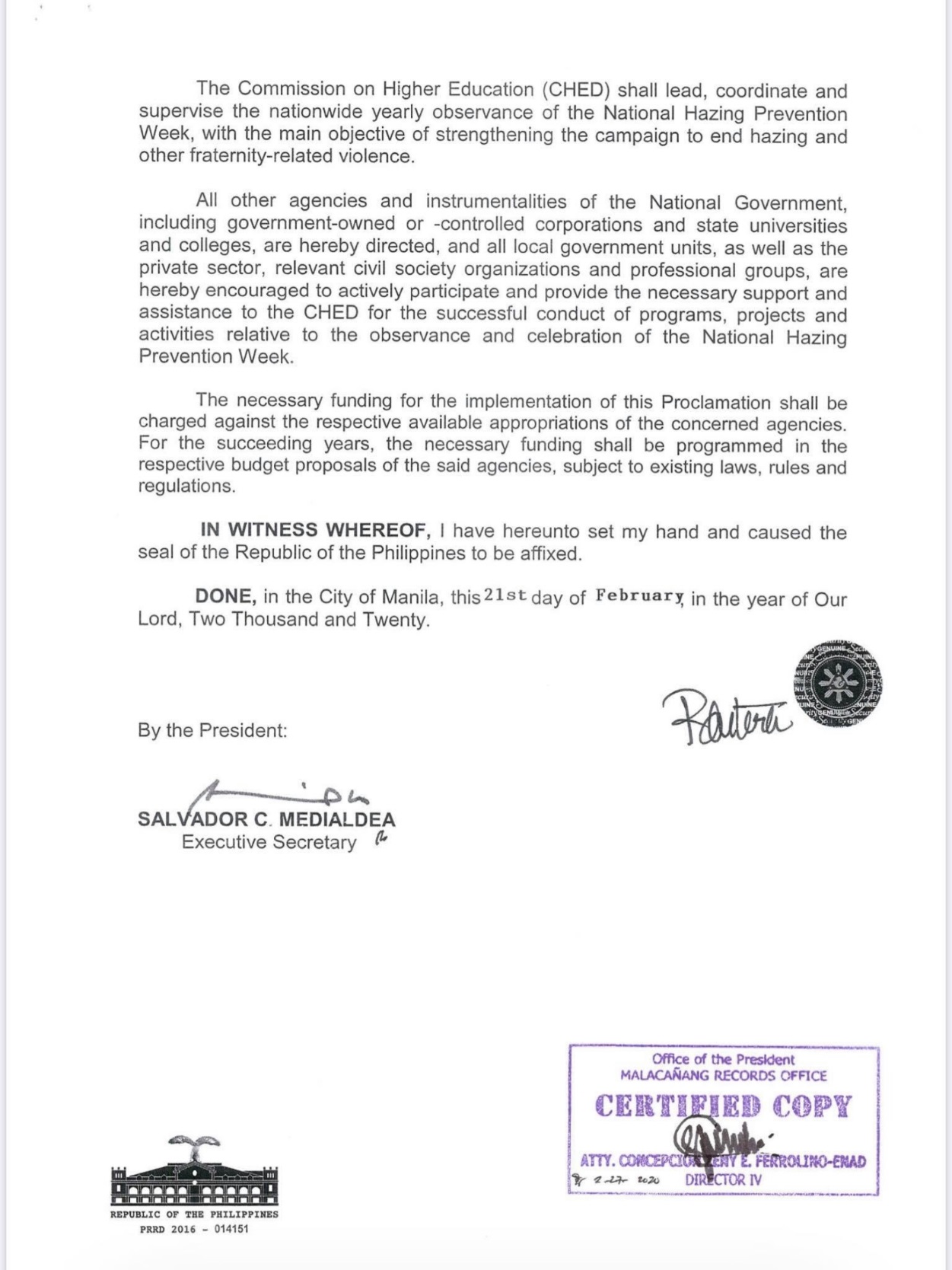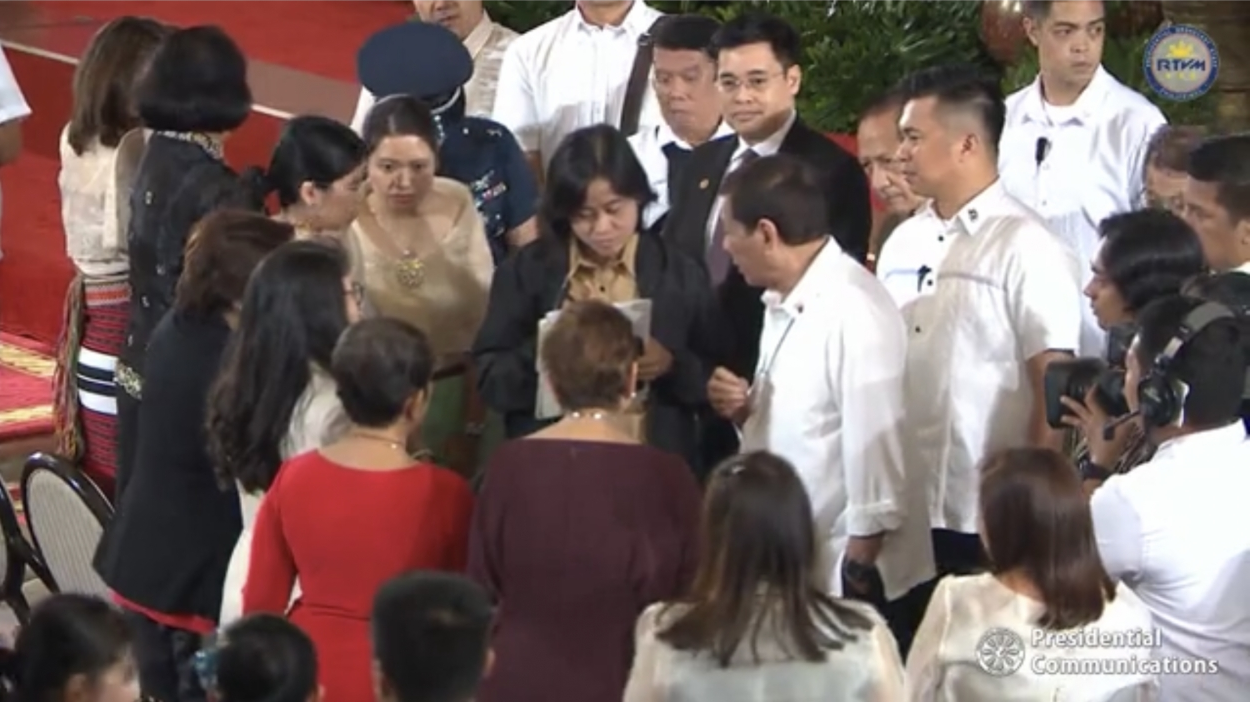Notes on Hazing
- Brotherhood of blood
- Impose the misery of hazing and use rituals in the name of brotherhood.
- No criminal intent in hazing and the violent acts were in persuant to tradition. Violence has become a tradition in the Greek letter fraternity, a twisted brotherhood bathed in blood.
Mrs. Servando upon knowing Mrs Villa asked if she will be able to get over the violence death of his son, Mrs Villa reponded these words in tears, “It will be here (pointing to her heart) in my lifetime.”
Hazing Victim, Guillo Cesar Servando, is an 18yrs old student of Dela Salle College of St Benilde,
Despite this defeat, his mother believes he left a legacy for boys like Guillo, Darwin, and EJ. “Leonard died because for something more. He is not just a hazing victim.”
“Up to now, masakit pa sa loob ko yung pagkamatay ng anak ko, hindi ko makalimutan. We have to fight for our children, na mangyayari pa ang ganito kung hindi tayo magtutulong-tulong.”
Gerarda Villa (center), mother of another hazing victim Lenny, expressed support for the Dormitorio family on their search for justice for their son, Darwin.
Lenny Villa, an Ateneo de Manila student, died in the hands of Aquila Legis Juris Fraternity members in 1991.
The case, which was only closed in 2012, led to the conviction of five accused – a 21-year battle for Villa’s family.
Even after going through Aquila’s grueling traditional rituals during the first day, Lenny continued his participation and finished the second day of initiation.
Based on the foregoing contextual background, and absent further proof showing clear malicious intent, we are constrained to rule that the specific animus iniuriandiwas not present in this case. Even if the specific acts of punching, kicking, paddling, and other modes of inflicting physical pain were done voluntarily, freely, and with intelligence, thereby satisfying the elements of freedom and intelligence in the felony of physical injuries, the fundamental ingredient of criminal intent was not proven beyond reasonable doubt. On the contrary, all that was proven was that the acts were done pursuant to tradition. Although the additional “rounds” on the second night were held upon the insistence of Villareal and Dizon, the initiations were officially reopened with the consent of the head of the initiation rites; and the accused fraternity members still participated in the rituals, including the paddling, which were performed pursuant to tradition. Other than the paddle, no other “weapon” was used to inflict injuries on Lenny. The targeted body parts were predominantly the legs and the arms. The designation of roles, including the role of auxiliaries, which were assigned for the specific purpose of lending assistance to and taking care of the neophytes during the initiation rites, further belied the presence of malicious intent. All those who wished to join the fraternity went through the same process of “traditional” initiation; there is no proof that Lenny Villa was specifically targeted or given a different treatment. We stress that Congress itself recognized that hazing is uniquely different from common crimes. The totality of the circumstances must therefore be taken into consideration.”
The concerns on the then laws applicable to hazing were addressed by the Anti-Hazing Law which no longer requires malicious intent. The wrongful acts are already deemed criminal by said special law.
Unfortunately, we have not heard of any convictions yet under the Anti-Hazing Law even as there have been numerous hazing victims after the law was enacted in 1995. The law seems comprehensive enough.




